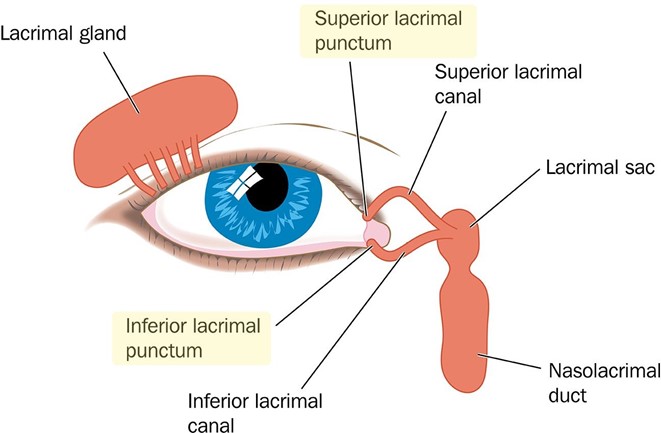A nurse is preparing to administer eye drops to a child. Which of the following actions should the nurse take?
Apply pressure to the lacrimal punctum after administering the drops.
Position the child side-lying on the bed before administering the drops.
Wipe from the outer to the inner canthus after administering the drops.
Flush the eye with normal saline solution before administering the drops.
The Correct Answer is A
When administering eye drops to a child, the nurse should apply gentle pressure to the lacrimal punctum (the small opening in the inner corner of the eye) after administering the drops. This can help prevent the medication from draining into the tear duct and being absorbed into the bloodstream, which can reduce systemic side effects.

Nursing Test Bank
Naxlex Comprehensive Predictor Exams
Related Questions
Correct Answer is C
Explanation
Physical assessment findings are important to include in a referral for a physical therapist because they provide information about the client's current physical condition, including range of motion, strength, and any areas of pain or discomfort. This information is essential for the physical therapist to develop an appropriate treatment plan for the client. Family medical history and medical health insurance claims may be important for overall client care but are not directly relevant to a referral for a physical therapist.
Medications taken prior to admission may be relevant if they affect the client's physical abilities or pain level, but again, physical assessment findings are more directly related to the referral for a physical therapist.
Correct Answer is C
Explanation
Bacterial meningitis is a serious infection of the membranes surrounding the brain and spinal cord that can cause inflammation and damage to the nervous system.
Nuchal rigidity refers to stiffness and pain in the neck that makes it difficult to flex the neck forward. This finding is indicative of inflammation of the meninges and is a classic sign of meningitis.
Pedal edema refers to swelling of the feet and ankles and can be caused by various conditions such as heart, liver, or kidney problems.
Jaundice refers to yellowing of the skin and eyes and can be caused by liver or bile duct disease.
Hematuria refers to the presence of blood in the urine and can be caused by various conditions such as urinary tract infections, kidney stones, or bladder cancer. These findings are not related to bacterial meningitis and may suggest other health concerns that require further evaluation and management.
Whether you are a student looking to ace your exams or a practicing nurse seeking to enhance your expertise , our nursing education contents will empower you with the confidence and competence to make a difference in the lives of patients and become a respected leader in the healthcare field.
Visit Naxlex, invest in your future and unlock endless possibilities with our unparalleled nursing education contents today
Report Wrong Answer on the Current Question
Do you disagree with the answer? If yes, what is your expected answer? Explain.
Kindly be descriptive with the issue you are facing.
